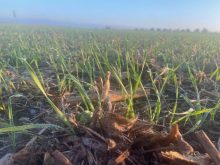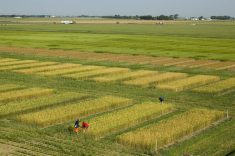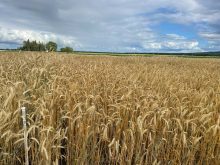Green-leaved winter wheat this time of year is a promising sign, but no guarantee the crop survived the winter.
“Some of those plants are still green from last fall,” Lionel Kaskiw, Manitoba Agriculture’s Souris-based Farm Production Advisor said May 1 during the Westman Crop Talk webinar. “But it definitely is nice right now to see those green rows showing up and the majority of the time those plants are healthy plants when you did them up.”
Farmers need to dig up a few winter wheat plants to see if they are alive, he said. Living plants will have a white crown and roots, he said.
“Winter wheat plants are starting to grow fairly good right now,” Kaskiw said. “It should be fairly easy to tell.”
Winterkill is often spotty.
“I think we’re going to see some of that this year just with the lack of (insulating) snow that we’ve had in some areas,” he said. ‘The cool April may have had an affect on some of the plants as well.”

Ideally a winter wheat field should have around 20 plants per square foot, Kaskiw said. But even 10 to 15 plants per square foot can produce an adequate crop.
“Winter wheat has an amazing ability to produce a lot of tillers,” he said.
Now is the time to apply nitrogen fertilizer if it wasn’t done in the fall, Kaskiw said.
“Try to get out there as soon as possible because right now it would be good for those plants to get that extra boost of nutrients to get going. Most stands I’ve seen in so far are looking pretty decent.”




















